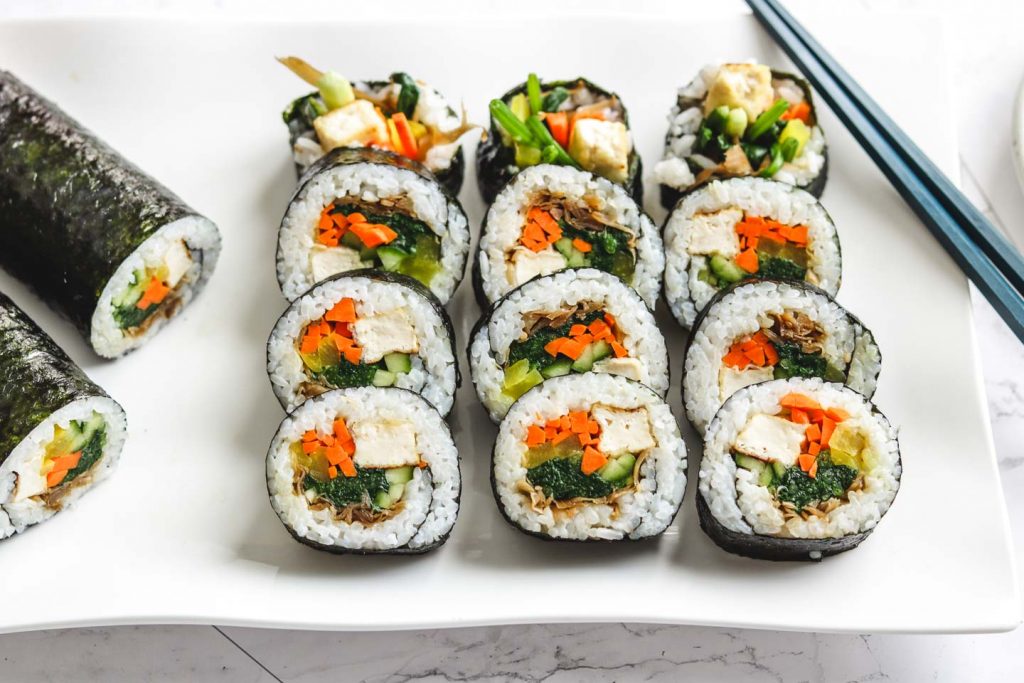What is Kimbap?
- It is a Korean dish that looks like Japanese sushi “norimaki”.
- It has a few different spelling, the most common alternative is “Gimbap”.
- Kim (or Gim) means seaweed or nori in Korean, and Bap means cooked rice.
- It is often cut in bite-sized pieces, and wrapped with aluminium foil.
- Since is a convenient food to pack and carry, it’s a popular take-out food to take to road trip or picnic, or have it as an easy, quick meal.
What Is a Kimbap Made Of?
- Dried Laver (Korean Seaweed Sheet)
- Cooked Rice
- Sesame Oil
- Just like Japanese sushi, the ingredients of the filling can vary, but the traditional and most common fillings are:
- Carrot
- Pickled Radish
- Burdock Root
- Minced Beef
- Egg
- Imitation Crab Stick

History of Kimbap
There are actually two versions of Kimbap’s history, one is associated with Japan, and one is associated with Korean history:
- 1. Associated with Japanese Sushi Roll
- Back when Korea was influenced by Japanese culture, Japanese Sushi Roll, or norimaki was introduced and adapted.
- At that time, speaking Korean was prohibited, so they would refer kimbap as “norimaki”.
- But there were some differences between kimbap and norimaki:
- The cooked rice in kimbap is seasoned with sesame oil while the rice in sushi roll is seasoned with rice vinegar.
- The filling of kimbap is always cooked food or preserved meat, while Japanese sushi roll can have raw fish inside.
- 2. Associated with Korean Eating Culture, “Ssam”
- Back in Joseun era, Korean had a eating culture called ssam, meaning “wrapping food”.
- People at that time liked to wrap rice and side dishes with seaweed sheet and eat it in one bite.
- Kimbap is a modernized version of the ssam culture, where people started to wrap various cooked ingredients and rice with a seaweed sheet and roll it.
/kimbap-korean-sushi-rolls-2118795-Hero-5b7dbdd346e0fb00250718b8.jpg)
https://en.wikipedia.org/wiki/Gimbap#cite_note-14 http://www.hansik.org/en/board.do?cmd=view&bbs_id=054&menu=PEN2020100&lang=en&art_id=837 https://behgopa.com/2018/08/1.html Photo used: https://i1.wp.com/jajabakes.com/wp-content/uploads/2018/08/cut-kimbab-recipe-1.jpg?fit=860572 https://www.thespruceeats.com/thmb/AH8JQR2GnNk874DVxH1aMk-uU58=/2848x2848/smart/filters:no_upscale()/kimbap-korean-sushi-rolls-2118795-Hero-5b7dbdd346e0fb00250718b8.jpg https://okonomikitchen.com/wp-content/uploads/2019/08/vegan-kimchi-pancakes-1-of-1-1024x683.jpg


Great focus on the historical background and cultural differences!